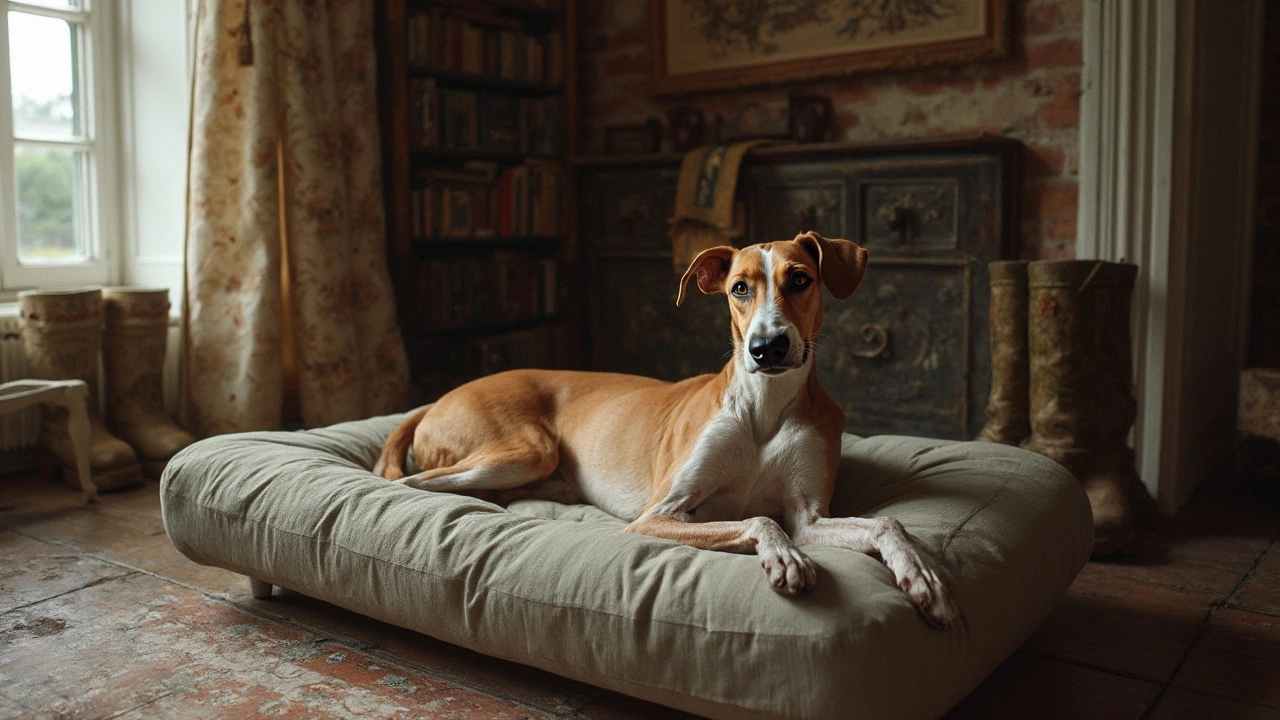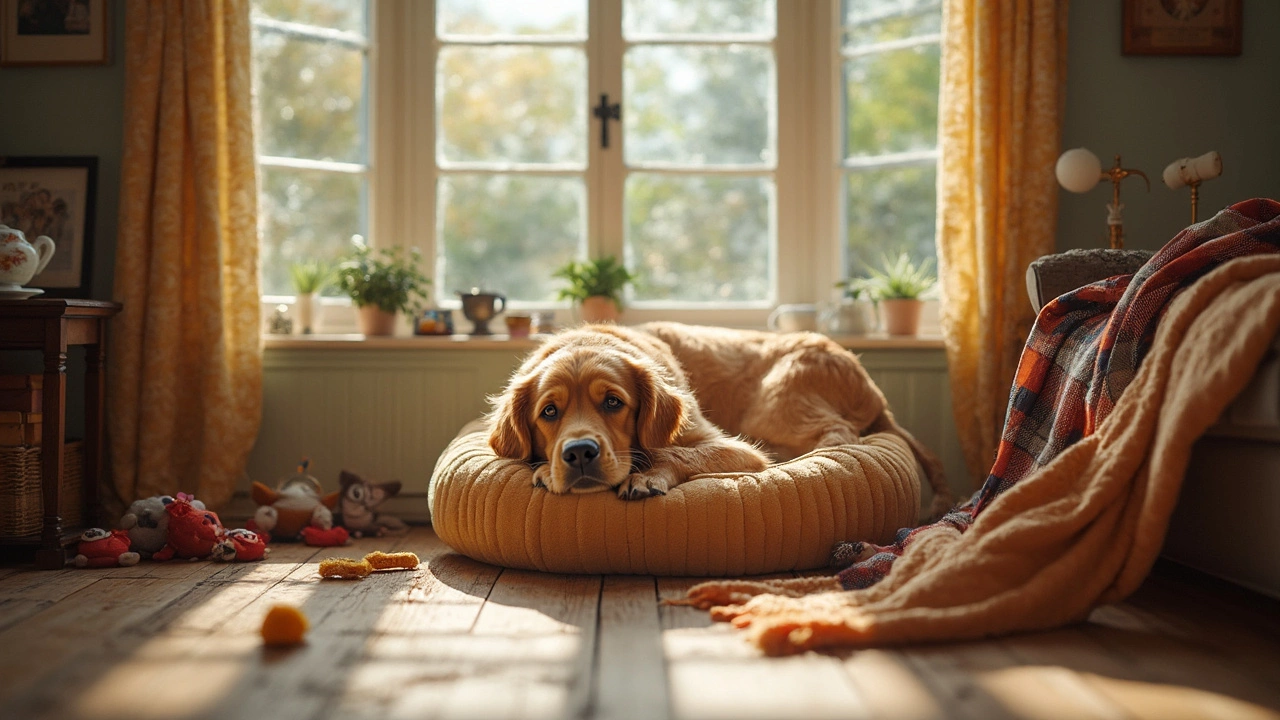Notice how some dogs curl into tiny balls, while others sprawl like furry pancakes? Their sleeping style actually says a lot about which bed shape makes them happiest. If you’ve ever wondered whether a round or rectangle bed is better for your dog, you’re not alone. This actually comes up a lot when pet parents like me start hunting for a new bed after another one bites the dust (thanks, Lachlan’s muddy paws).
The bed shape isn’t just about what looks nice in your living room. It actually affects how well your dog can relax and feel safe. The wrong shape can leave them awkwardly hanging off the edge, or not quite able to nestle in the way they want. Getting the right fit is about understanding how your pup naturally likes to rest—curled, stretched, or somewhere in between. I’ll share what I’ve learned, with real examples and easy ways to spot which type your dog might love most.
- How Dogs Actually Sleep
- Round Beds: The Cuddler’s Choice
- Rectangle Beds: For the Chillers and Stretchers
- Choosing What Works for Your Pup
How Dogs Actually Sleep
Every dog has a couple of favorite positions when it’s time to nap. Some curl up like tiny doughnuts, some lie flat on their stomachs with paws out, others stretch out on their side and take up as much space as possible. These sleep styles aren’t random—they tell you a lot about what makes your dog feel secure and comfortable.
Did you know that, according to the American Kennel Club, most dogs spend between 12 to 14 hours a day sleeping? Puppies and seniors can hit 18 hours! And the way they sleep is actually wired into their bodies and personalities. Breeds bred for cold weather, like Huskies or Malamutes, tend to curl up tightly to stay warm. Bigger dogs, especially those with long limbs, often like to sprawl out so their joints don't get cramped.
Here’s a quick look at what different sleep positions usually mean:
- Curled up: Trying to stay warm or feel safer. This is super common in rescue dogs or pups in new environments.
- Sprawled on the side: These dogs feel safe and relaxed. They aren’t worried about anything sneaking up on them.
- Lying on the back with legs up: Totally comfortable and trusting of their surroundings. Not many dogs do this unless they’re really chill at home.
Check out this quick sleep fact table:
| Position | What It Means | Common Breeds |
|---|---|---|
| Curling Up | Seeks warmth/safety | Husky, Terrier, Shih Tzu |
| Side Sprawl | Relaxed & feels secure | Golden Retriever, Labrador |
| Back Sleeping | Feels safe, cooling off | Bulldog, Greyhound |
If you watch your pup for a few nights, you’ll notice a pattern. And here’s the thing: that pattern is your best clue for picking between a round or rectangle bed. It isn’t about training them to like a certain shape—it’s about matching the bed to the way they already love to sleep. This makes a big difference for quality rest, especially if you want to keep your dog off your own bed (speaking from experience).
Round Beds: The Cuddler’s Choice
Ever noticed your dog curling into a ball, nose tucked against their tail? That little donut move isn’t random. Lots of pups naturally sleep this way because it keeps them warm and helps them feel protected. If your dog likes to snuggle up, a round bed fits the bill perfectly. It hugs their body, giving a sense of security that’s especially comforting for smaller breeds or pups who get chilly easily.
Round beds with raised edges work a bit like a pillow fort. The sides let dogs rest their heads or nuzzle down, which is soothing for anxious pets or those who like to burrow. In fact, breeds like Chihuahuas, Dachshunds, and Shih Tzus tend to pick round beds over flat mats. Even big breeds that curl can benefit, as long as you size up the bed so there’s no squishing going on.
Here’s something interesting: A dog beds survey from 2023 found that about 57% of dogs who prefer curling up gravitate toward round beds when given the choice. If your pup circles before settling, it’s usually a dead giveaway they’ll enjoy this shape.
| Breed Example | Common Sleep Style | Ideal Bed Shape |
|---|---|---|
| Chihuahua | Curled up | Round |
| Cocker Spaniel | Curled up | Round |
| Miniature Schnauzer | Curled up | Round |
When picking a round bed, watch for sturdy seams and a washable cover. If you’ve got a chewer or a dog who drags their bed around, look for tougher fabrics. And check the inside cushion—it should be thick enough that your dog doesn’t sink all the way to the floor. For pups with sore joints, choosing one with memory foam can make a real difference.
- Choose a size that matches your dog’s curled-up length (measure them while they sleep).
- Pick a bed with raised sides for extra coziness.
- Wash regularly—small spaces collect fur and dirt fast.
If your dog sleeps like a little cinnamon roll, a round bed is usually the right move. Watch how relaxed they get the first night—most cuddle-lovers settle in and barely budge until breakfast.

Rectangle Beds: For the Chillers and Stretchers
Ever catch your dog stretched out like they're claiming their own lounge chair? Rectangle beds are made for these chillers. These beds give dogs full freedom to sprawl their legs, flip onto their back, or sleep belly up without bumping into raised edges. If your dog prefers sleeping flat—what vets call the "side sleeper" or "superman pose"—this design just makes sense.
Rectangle beds usually come with flat surfaces, sometimes adding bolsters (mini pillows) along the sides for headrest action. They're a lifesaver for bigger breeds like Labs, Goldens, and Shepherds, or mixed breeds with long bodies. They're also popular for older dogs who deal with joint stiffness or arthritis. The flat, roomy shape makes it easier for them to get up and down, which can be a real struggle with beds that have sides all the way around.
Check out these common rectangle bed benefits:
- Perfect for large, long, or stretch-loving dogs
- Great for puppies who don't like to feel crowded
- Ideal if your dog loves sharing space with a buddy (mine sometimes pile onto one bed like it's a sleepover!)
- Works well in corners or lined up along couches/walls
Here's a quick look at the difference in recommended bed shapes for popular breeds:
| Dog Breed | Usual Sleeping Style | Best Bed Shape |
|---|---|---|
| Labrador Retriever | Side Sleeper, Stretcher | Rectangle |
| Greyhound | Back Sleeper, Stretcher | Rectangle |
| Dachshund | Curler, Burrower | Round |
| Corgi | Sprawler, Curler | Rectangle or Round |
When picking out a dog bed that's rectangular, size matters—a lot. Measure from your dog's nose to their tail-tip while they're sleeping stretched out. Add about 6-8 inches to give them breathing room. Go for easy-to-wash, heavy-duty covers if you’ve got a mess-maker (like mine after a rainy backyard romp!). Memory foam inserts are a bonus, especially if your pup is older or has sore joints.
Rectangle beds aren’t just functional; they’re practical for fitting into corners, placing along the wall, or using in crates. If your pup's the type who loves to chill in style, stretching out like a king or queen, this bed will probably get their tail wagging.
Choosing What Works for Your Pup
Picking the right bed for your dog isn’t just about what looks good in your space—it’s about your dog’s comfort. Here’s what to think about before you spend on a new dog bed:
Watch how your dog sleeps most of the time. Dogs that curl up in little balls want to feel secure, so they’ll go for round or oval beds with raised sides. Stretchers—those dogs who sleep belly-up, limbs out—need the space of a rectangle bed to really relax. Bigger breeds often need more stretching room, while small breeds like to burrow and nestle. Don’t just guess; your dog’s habits are your best clue.
- Measure your pup. Don’t rely on labels like "medium" or "large." Get the tape measure and see how long your dog is nose-to-tail when stretched out. Give them an extra few inches so they aren’t cramped.
- Check the bed’s sides. Raised walls or bolsters help anxious dogs feel secure, but some older dogs (or those with joint problems) might struggle to climb in, especially if the sides are too high.
- Consider health needs. Dogs with arthritis or mobility problems do better with orthopedic foam or easy-entry beds. Rectangle shapes are easiest for them to get in and out without much effort.
- Think about washing. Beds get dirty quick. Look for removable covers, and washability is especially key if your dog loves the outdoors or has allergies.
You don’t need to break the bank, but don’t go super cheap—flat or lumpy beds do nothing for your dog’s joints, no matter the shape. If you have more than one dog, you may notice each one has a strong preference that fits their personality. Lachlan, for example, went through three different bed shapes before settling on a round, donut-style one. If you’re unsure, put down old towels or blankets in different shapes and see which one your dog picks over a week.
The bottom line: Your dog’s needs come first. With a little detective work, you’ll land on the perfect shape that keeps your pup happy—and your furniture fur-free.

